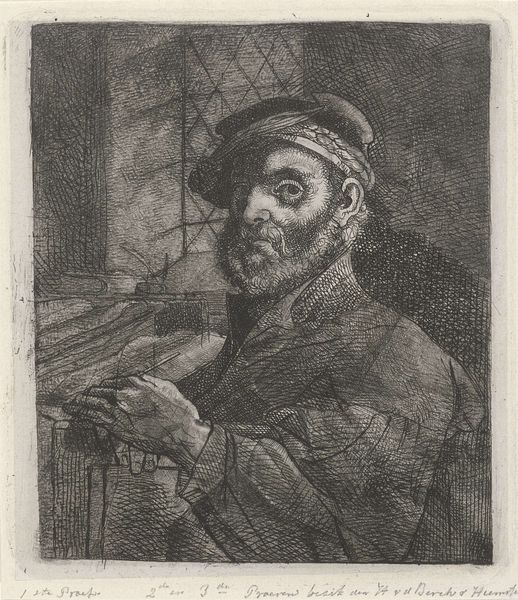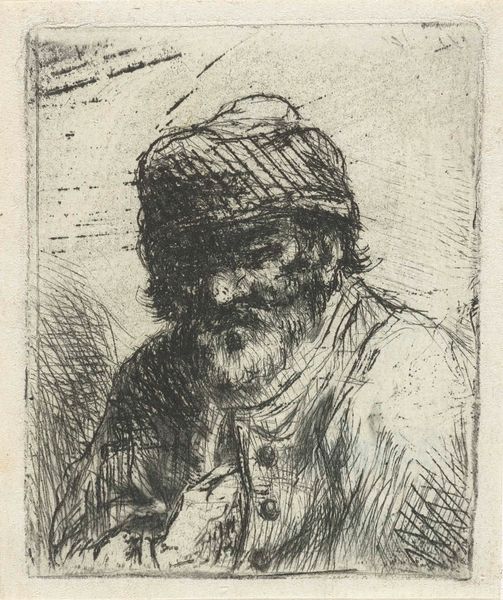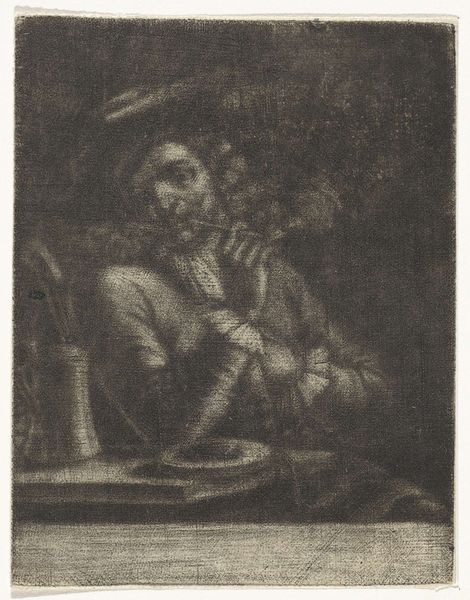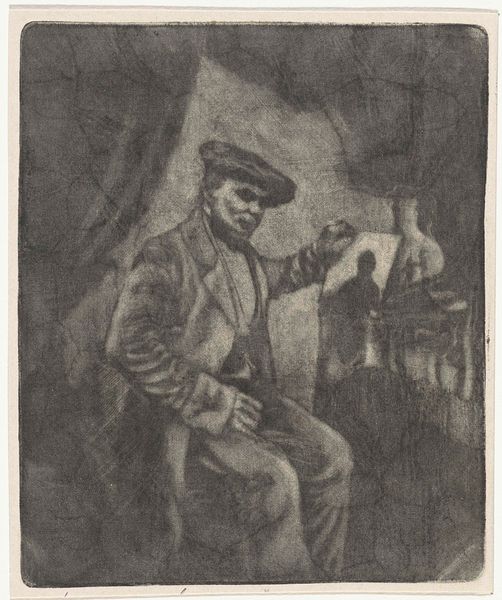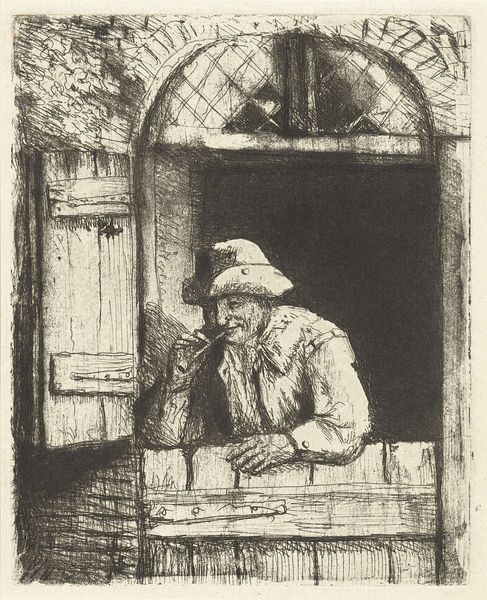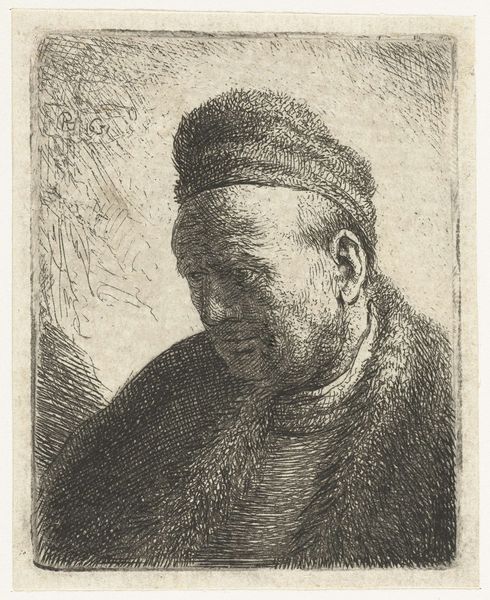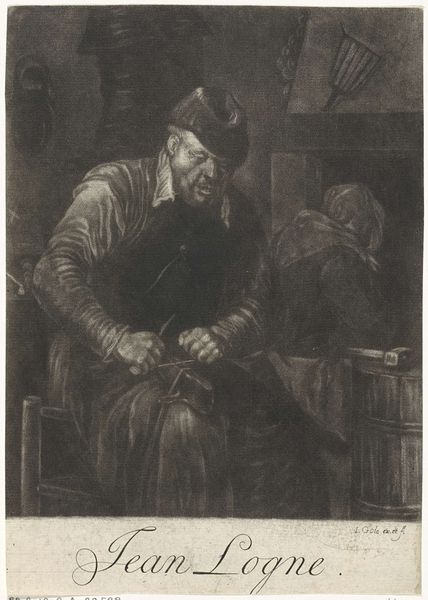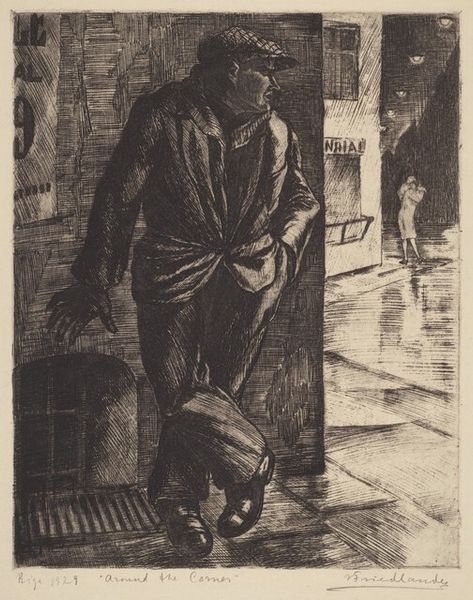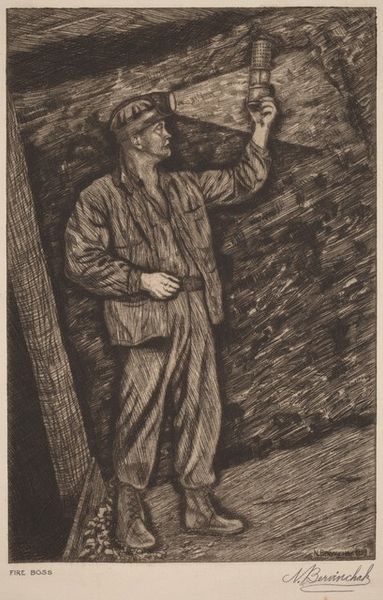
print, etching
#
portrait
#
16_19th-century
# print
#
etching
#
realism
Dimensions: width 127 mm, height 144 mm
Copyright: Rijks Museum: Open Domain
Jacobus Ludovicus Cornet made this etching of an unknown man in 1851. The composition reflects a broader fascination in the Netherlands with portraiture and genre scenes. Here, the sitter's contemplative gaze and the presence of books might suggest intellectual pursuits. In the Netherlands at this time, class structures, religious affiliations, and burgeoning nationalism shaped artistic patronage and subject matter. Artists often negotiated these forces, sometimes reinforcing social norms, and at other times challenging them through subtle visual cues. For example, the sitter's modest attire can be read as a statement of middle-class values. Art historians employ various research methods—archival work, social histories, and cultural studies—to interpret such works, shedding light on the intricate relationship between art and the societies that produce it. Through these methods, we can see art as an expression of broader social, economic, and political contexts.
Comments
No comments
Be the first to comment and join the conversation on the ultimate creative platform.
